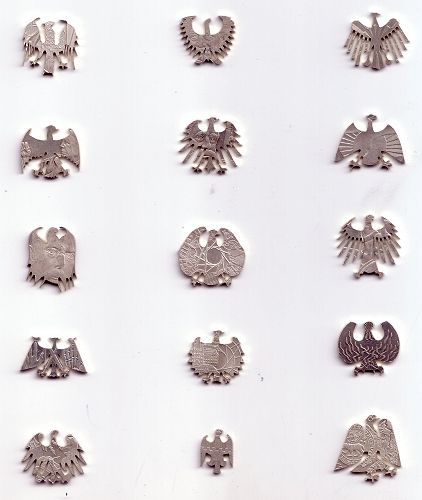
At the jeweller’s bench, saw-piercing 10DM coin commemorating the 50th anniversary of 20th July 1944, inscribed «WIDERSTAND GEGEN DEN NATIONALSOZIALISMUS», minted 6th July 1994, 625 silver alloy
by Heeyoung YounImmigrants forging identity
For the initial body of work I re-configured a complete set of 47 commemorative 10 Deutschmark coins into 'coinscapes' and inserted each lot of former legal tender into its own solander box; these were embossed with the text of the coin's rim, inviting you to take a critical look at national representation.
In looking at how we construct our identities, the material focus then moved to the center of coins, forging national emblems into wearable sketches. The subsequent body of work represents an investigation of migrancy, addressing experienced realities of identity and location. It questions whether the many hybrid identities of our contemporary culture can be embodied in a single object.
Immigrants to New Zealand, who are unable to obtain dual citizenship, are interviewed and photographed. Jewellery 'aids' materialized from cut and forged coin emblems, fitted with hearing aid material. They emerged as a response to the interviewee's situation and are specifically made for each participant, to whom they will be returned. The pieces are contextualized by portraits of the immigrants and 'passport' booklets presenting their transcribed interviews. The physical use of currency, passport imagery and hearing aid parts provides a direct link to relationships between national identity, capitalist economies and the sense of impairment.
Being in direct dialogue with immigrants to New Zealand, this particular contribution is central to contemporary culture overall. Immigrants represent an often marginalized voice and add to the cultural richness of any nation. They come from a wide range of cultural and ethnic communities. This engagement not only provided them with a voice in the arts and invited active participation on this level, but also examined connectivity and hybridity across-the-board. It has its roots in shared dialogue, which is at the core of cultural diversity in contemporary society. The audience became imperative in shaping the work; the controllable safety of the studio environment was removed and the making shifted away from the bench into the community.

